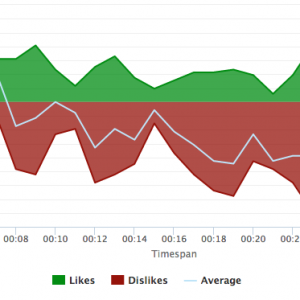The Ultimate A/B Video Testing Guide
Brands often want to know which version of an ad will work better as a part of their brand tracking before deciding to put it out to the public. These alternatives may come from a different color, design, or even as little as a single word in the call to action section. A/B testing, also interchangeably known as split testing, is a type of method in statistically analyzing two versions of the same concept to understand which one will do better over the other.
A/B testing is beneficial to brands, especially when it needs to acquire data that can help them achieve their desired results. An instance where this type of advertising testing is used is when brands want to know whether alternative A or B drives prospects to sign up for their product or service offering. A/B testing is the more straightforward video testing method, with multivariate testing as the more complicated one having a/b/c/d/e/f as its groups.
To help you learn more about A/B video testing, we have broken down all of the things you need to know. In this article, we will be walking you through all of the what’s, how’s, and why’s of A/B video testing.
1. Why perform a/b testing?
Marketers and those conducting advertising research often say how much difference minor tweaks in a campaign brings. Some even say that something as simple as a one-word change in a brand’s call to action can determine whether conversions have the potential to increase or decrease. If these are all true, we need something that can help prove that our small actions indeed bring differences. More importantly, pretesting your ads before launch can help you avoid potentially costly PR nightmares.
This is why brands must perform A/B or split testing. You do not only get to produce different versions of your campaign, mail out, or website landing page. You also get quantifiable results that you can easily interpret to understand which options work better for the brand.
2. How do you conduct a/b testing?
There are various types of software tools that you can choose from and use for your A/B testing. These tools can help you gauge the effectiveness of your digital marketing and enable you to take the necessary steps in areas that call for improvement. To help you get started, we will be listing down some ways to perform A/B testing in available platforms such as Facebook, Youtube, Mailchimp, and Google Analytics.
Facebook is a highly straightforward platform that has enabled its users to conduct A/B testing or split testing. To test your video ad, you can go to the Campaign Objective section of the Facebook Ads Manager. You can do this while creating your ad and clicking on the Conversions, Lead Generation, or App Installs button.
You will be prompted with a small tick box that will enable you to make your campaign a split test.
- YouTube
YouTube Analytics does not natively support A/B testing in its platform. However, you can use other third-party services and let them get the work done for you. If you opt not to use any other provider aside from YouTube, you can also post two versions of the same video and later compare its results using the platform’s analytics tool.
- Mailchimp
Another platform that makes it easier for users to conduct A/B testing is Mailchimp. It is an email management tool that enables you to place parameters for mailouts A/B testing quickly. You can use Biteable to make two videos to link that only have minimal differences and then look at the data to see whether the day of the week is a factor that affects the click-through rates of the videos.
Creating these two videos to link to will also allow you to know whether or not the way you sell your brand in the email subject line is a factor for engagement. Additionally, it can also enable you to determine any quantifiable effects of small details such as your thumbnail and many other minor things.
- Google Analytics
Google has also made it possible for its users to split test their websites. You can do this by placing two different versions of the same video on your website’s landing page. With the use of Google Analytics, you will see which one performs better than the other, and to top all of it off, anyone can use it for free!
3. What do you need to consider in a/b testing?
- Introduction
A/B testing can help you get the right balance and length of your campaign videos. Your introduction is a crucial part of anything, whether this is a video, mail out, or your website landing page. You must make sure that you include all of the necessary information while looking after this section’s length.
The introduction section must be short and concise, as you can only hold your viewers’ attention for a short period. With the help of A/B testing, you can determine the perfect length for all of your campaigns, may it be in the form of a video or a mailout.
- Music
Music works wonders in several areas, and you would be surprised by what it also does in your video campaigns. You must also consider this aspect when conducting your A/B testing and look closely at the type that works best in positively affecting your consumers’ buying behavior. It is essential to conduct split testing as music can also drastically change the same video’s meaning.
- Call to Action
We will further reiterate how much difference a good call to action brings to a brand. Every marketer knows that a CTA tells what the consumer is expected to do next, but their response is often affected by even the slightest change in the wordings. To ensure that you use the right words in your CTA, make sure to avoid any phrases that impose any obligation to your audience.
Conclusion
Today’s most successful companies used A/B testing to their advantage and exhaust whatever it can offer to maximize positive results. However, getting your brand into split testing is a commitment, so you need to make sure that you are willing and able to make changes to your ads. Today’s tools are wide enough to help you make this process easier and allow you to get noticeable results in no time.








